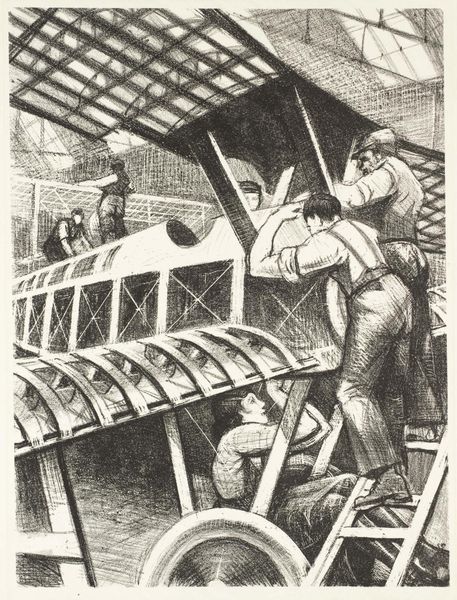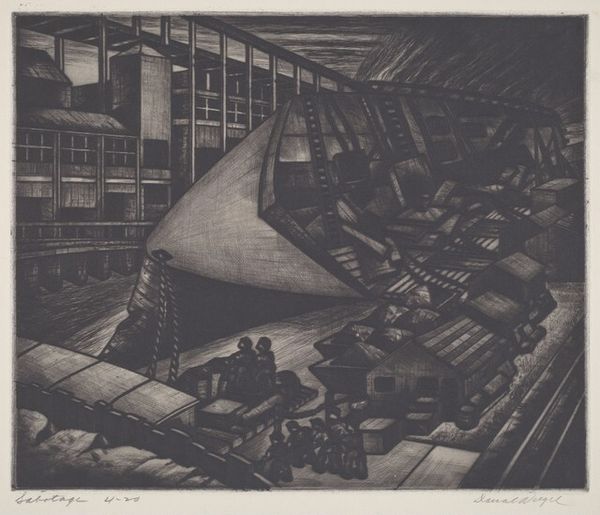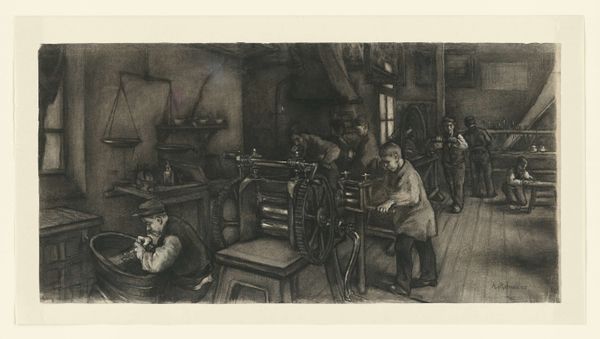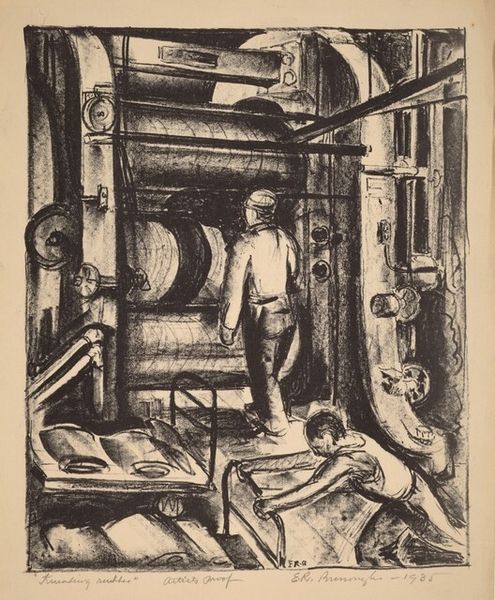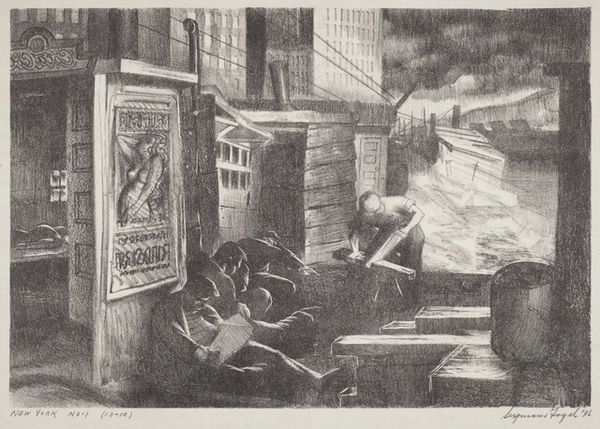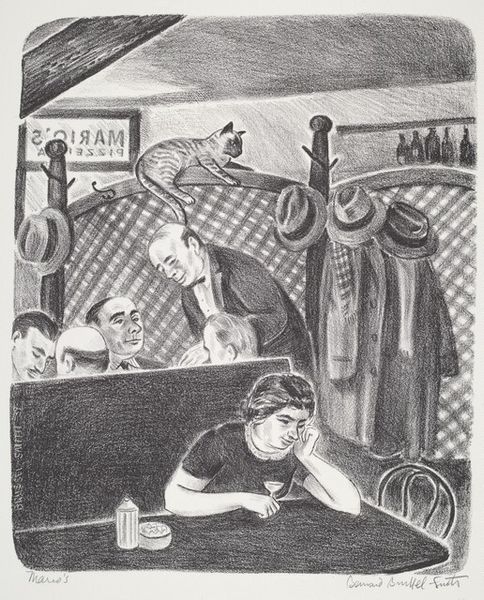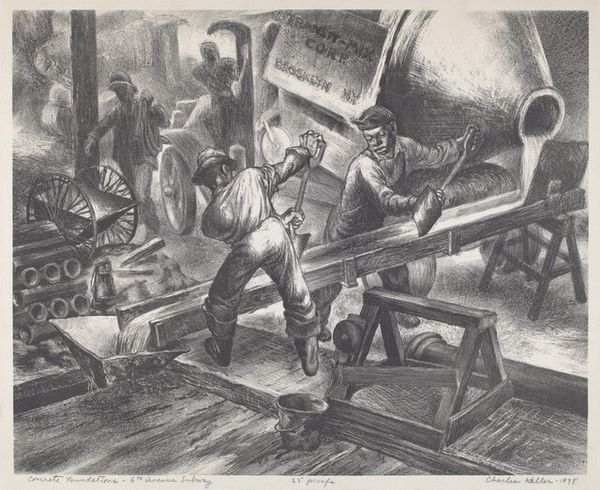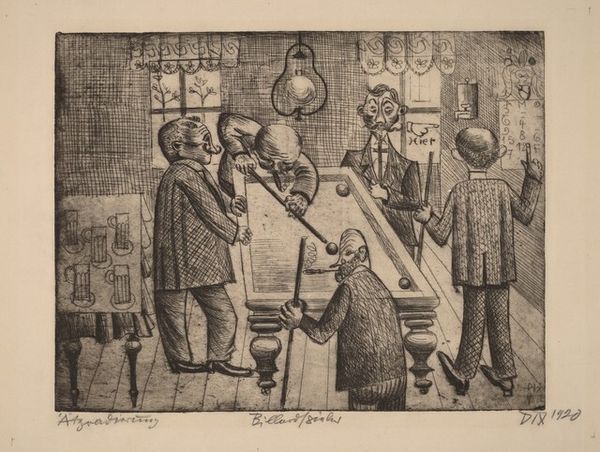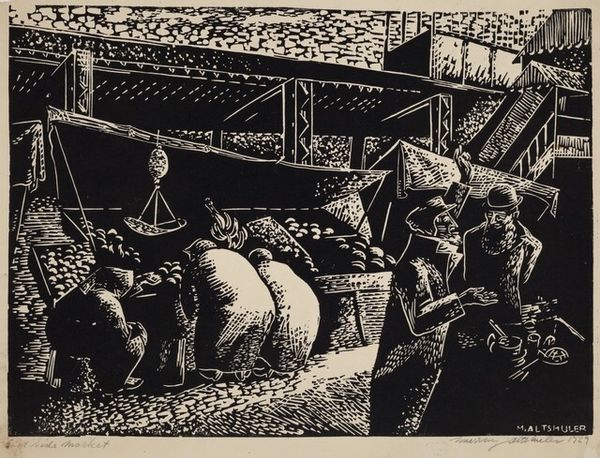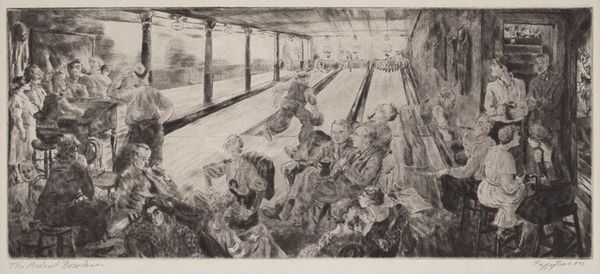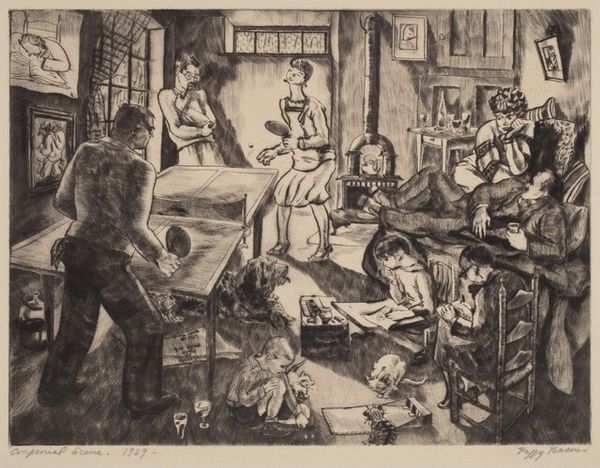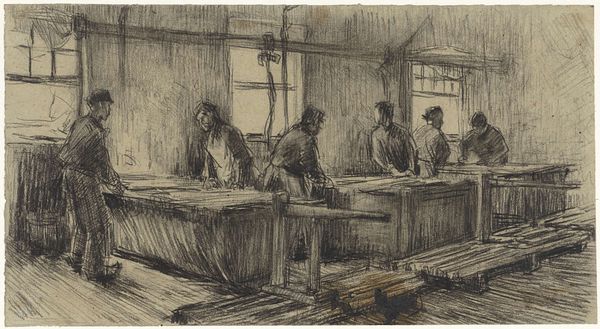
print, etching
# print
#
etching
#
figuration
#
pencil drawing
#
genre-painting
#
modernism
#
regionalism
#
realism
Dimensions: plate: 22.9 × 29.8 cm (9 × 11 3/4 in.) sheet: 30 × 35 cm (11 13/16 × 13 3/4 in.)
Copyright: National Gallery of Art: CC0 1.0
Curator: Jackson Lee Nesbitt created "Wire Mill" in 1939. It's an etching, a printmaking technique where lines are incised into a metal plate with acid, and then inked and printed. Editor: The scene gives me a sense of quiet industry. It's monochromatic, of course, and that really hones the eye into the details: the cool steel of the machinery, the repeating geometries, and those diligent workers absorbed in their tasks. I love the focus, though…on manual labor. Curator: Absolutely, and this work fits into a broader moment in American art. The Regionalist movement often depicted scenes of everyday life, particularly in rural or industrial settings. It sought to capture a uniquely American experience during a period of significant change. Nesbitt presents the laborers not so much as symbols of industrial progress, but as participants in this progress. Consider how labor here manifests itself as a critical node in the social fabric. Editor: What intrigues me are the shadows. There's a feeling of subdued tension in the piece – are they weary, or resigned? Or proud of their labor and participation in building their world, layer by layer, meter by meter? Curator: Indeed, etching is perfect to display details, textures, and light and shadow. You can really understand the artist's mark in printmaking like this. By examining how Nesbitt translated this industrial site into a printed image, we begin to see how labor, materiality, and consumption become a critical node in our culture. The man in the foreground becomes more than a singular human, an element in a landscape that is so very clearly being forged. Editor: You know, seeing the focus on process makes the physical print itself even more poignant. Here we have this hard labor distilled into a kind of art. The labor inside, and the labor and precision required to put this scene in front of me, now… It echoes. Curator: Right? It shows us art as the result of labor and careful design rather than innate genius. Editor: Thanks for unpacking the social context; that definitely deepened my understanding. Curator: And for me, your seeing the emotional impact reminds me why the art endures.
Comments
No comments
Be the first to comment and join the conversation on the ultimate creative platform.
